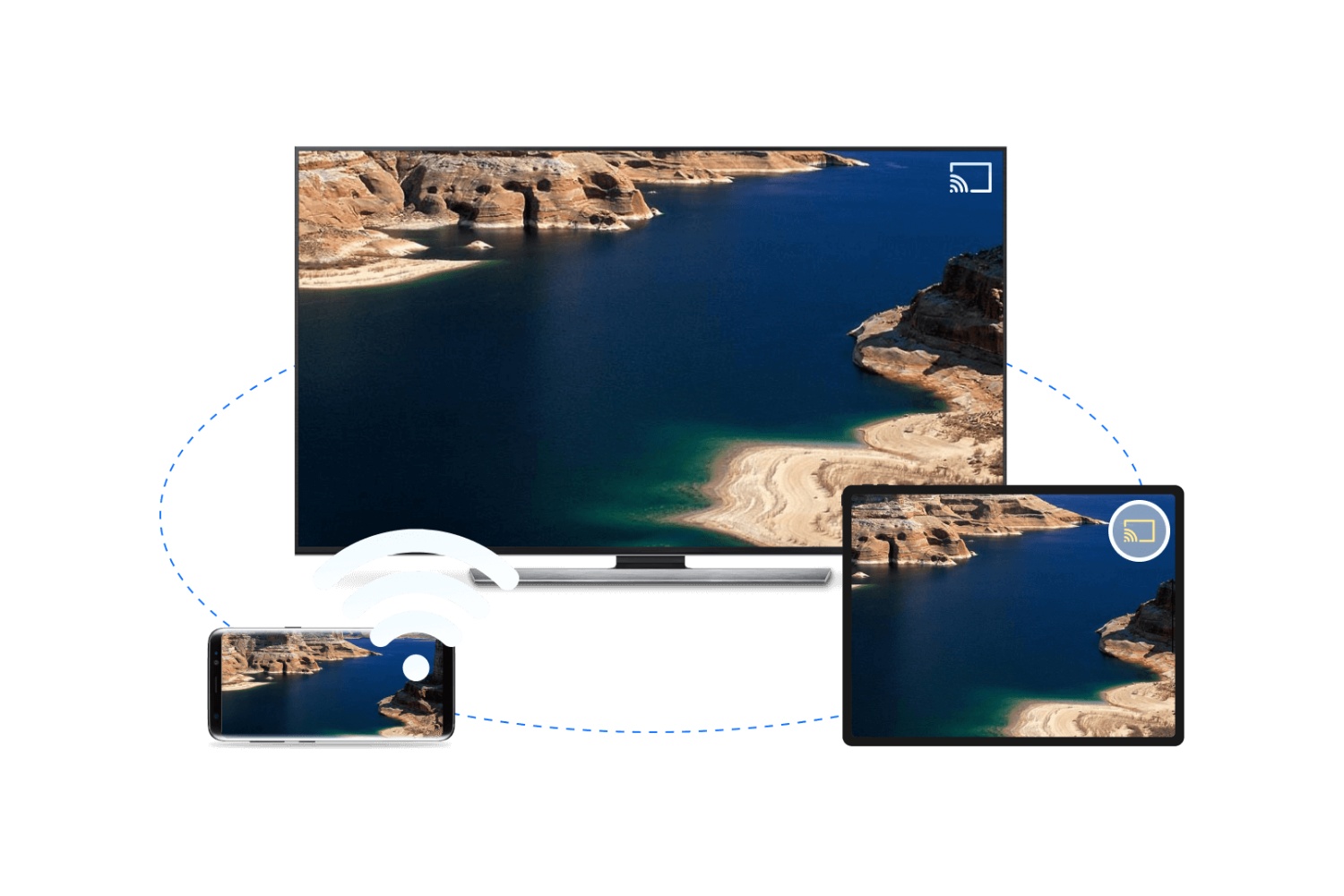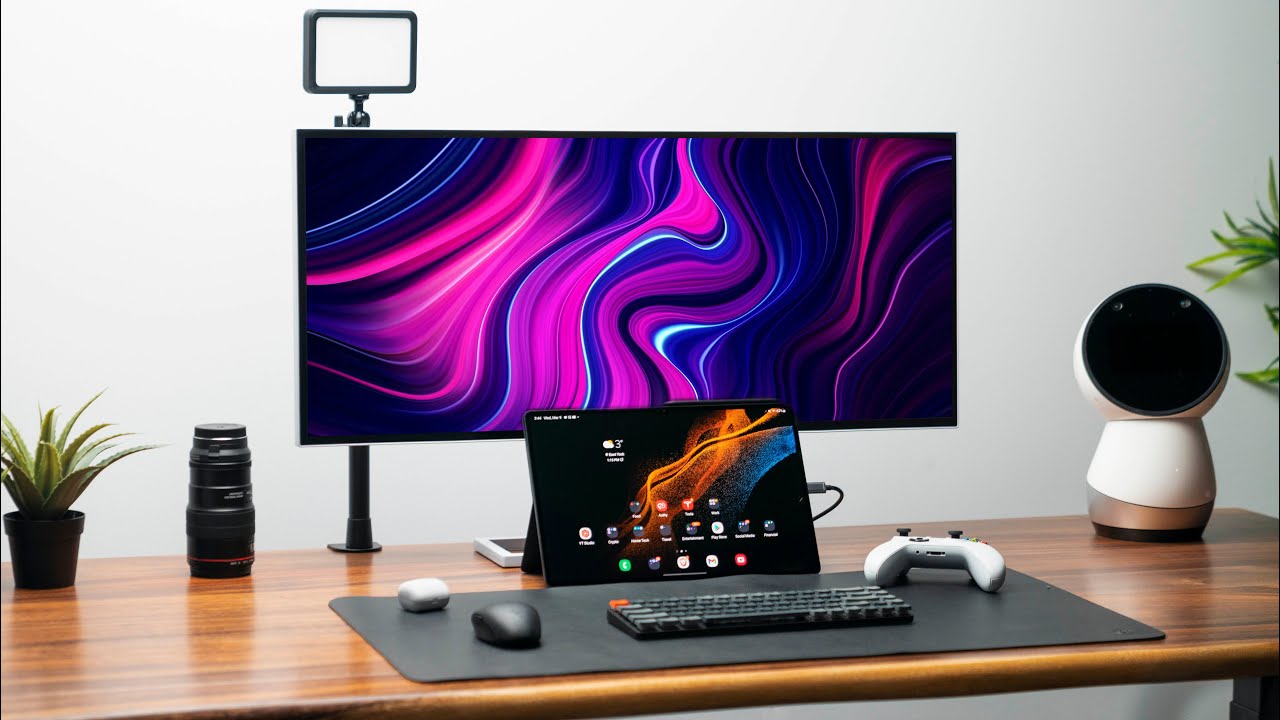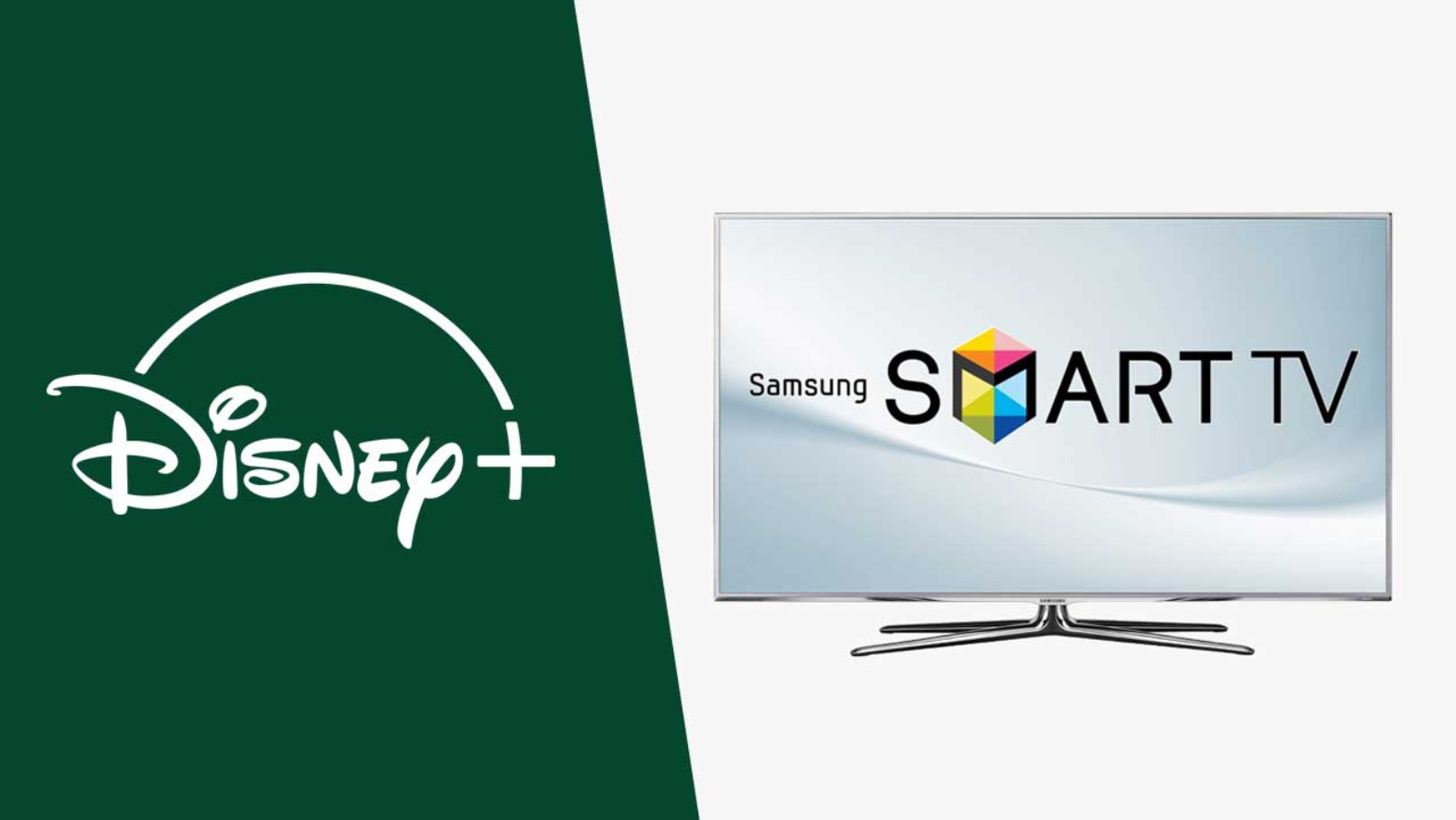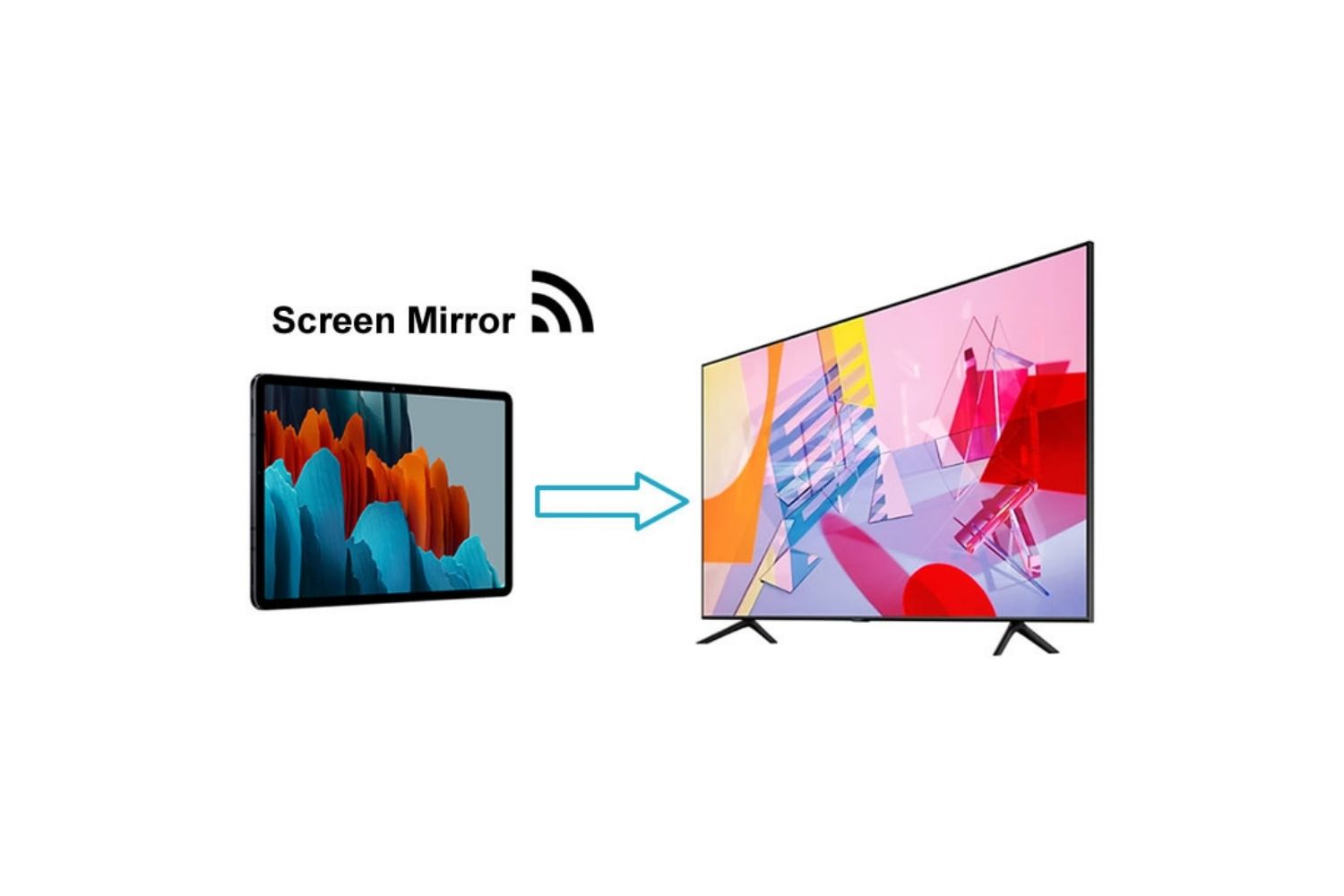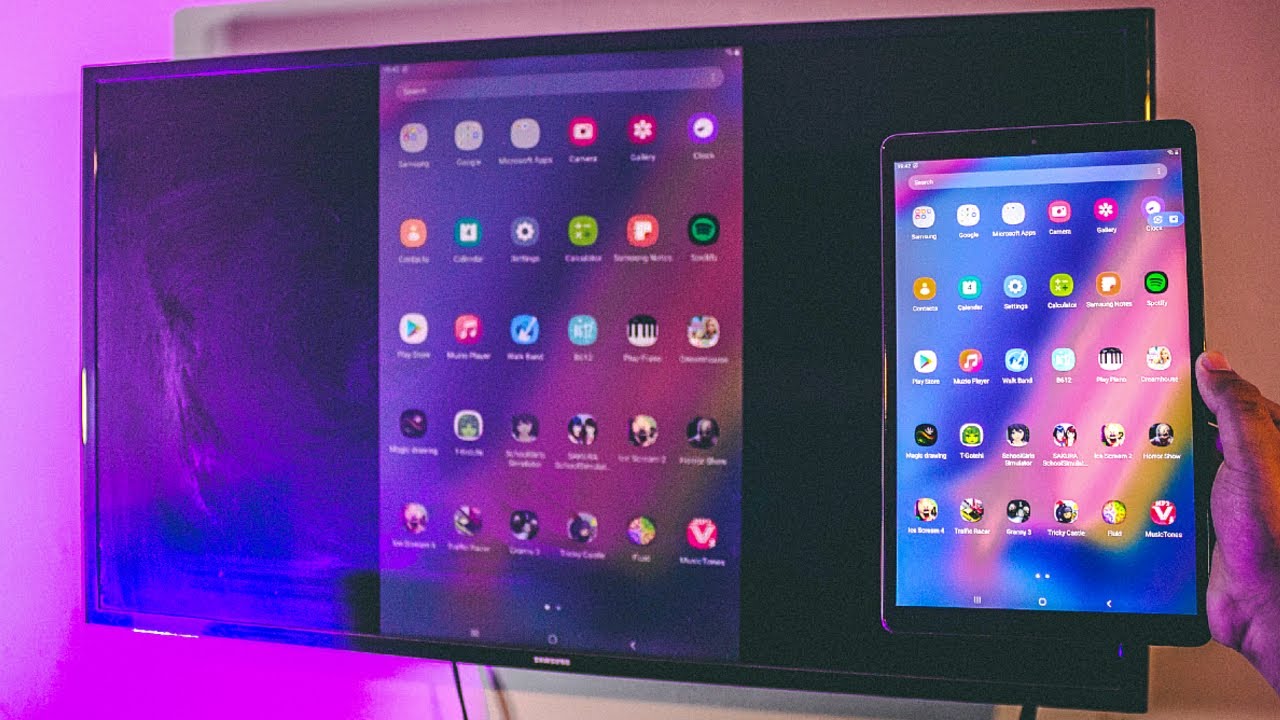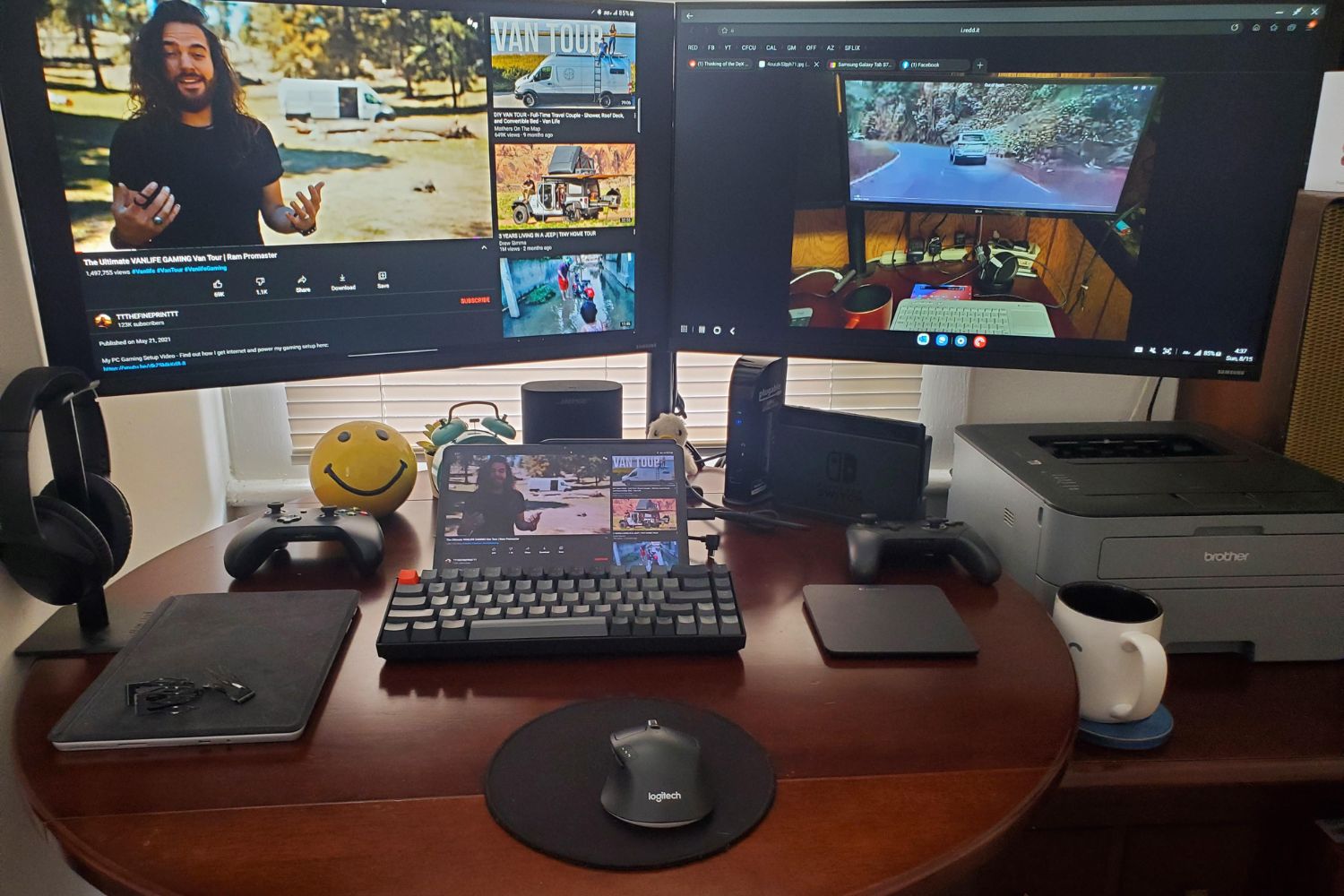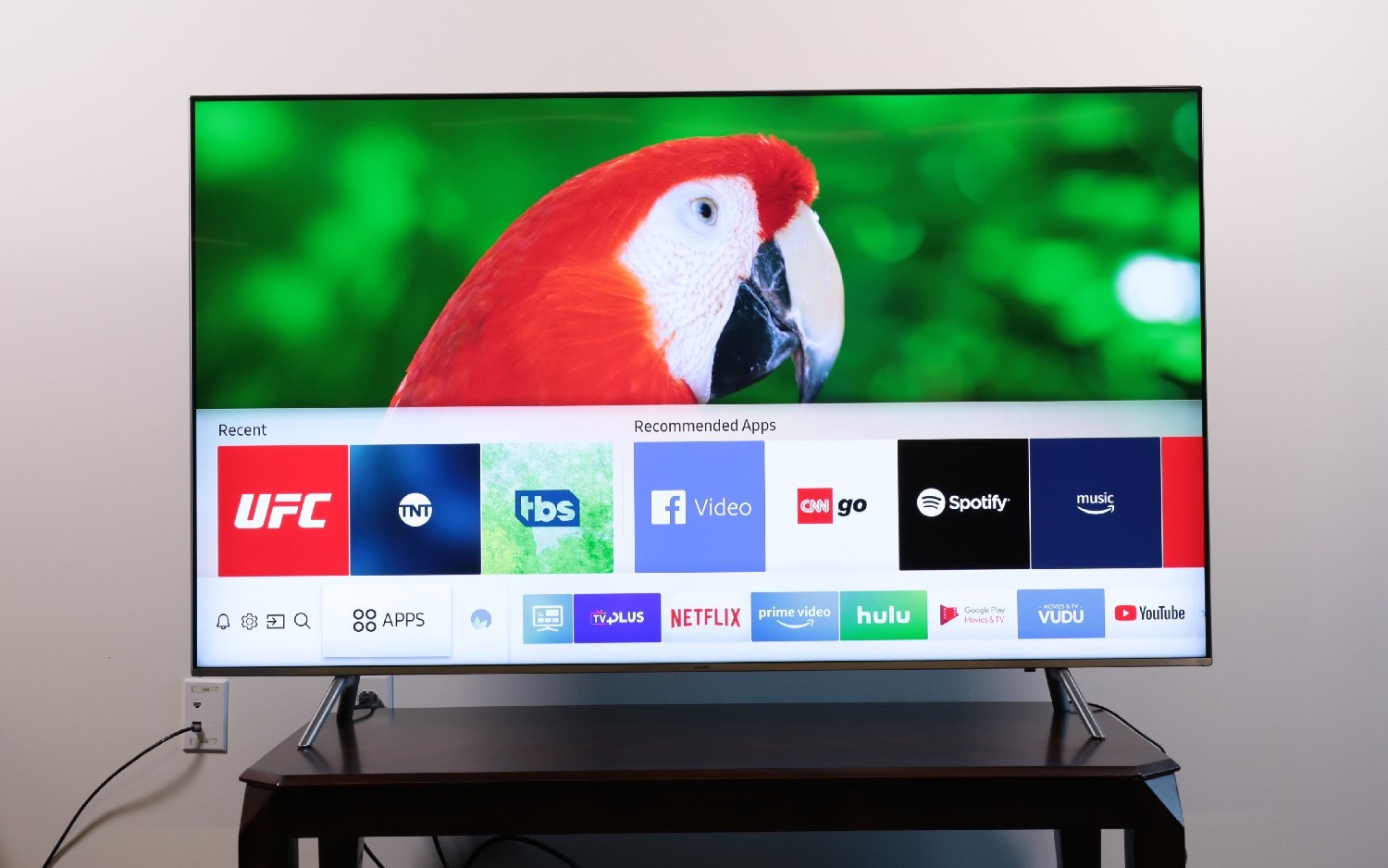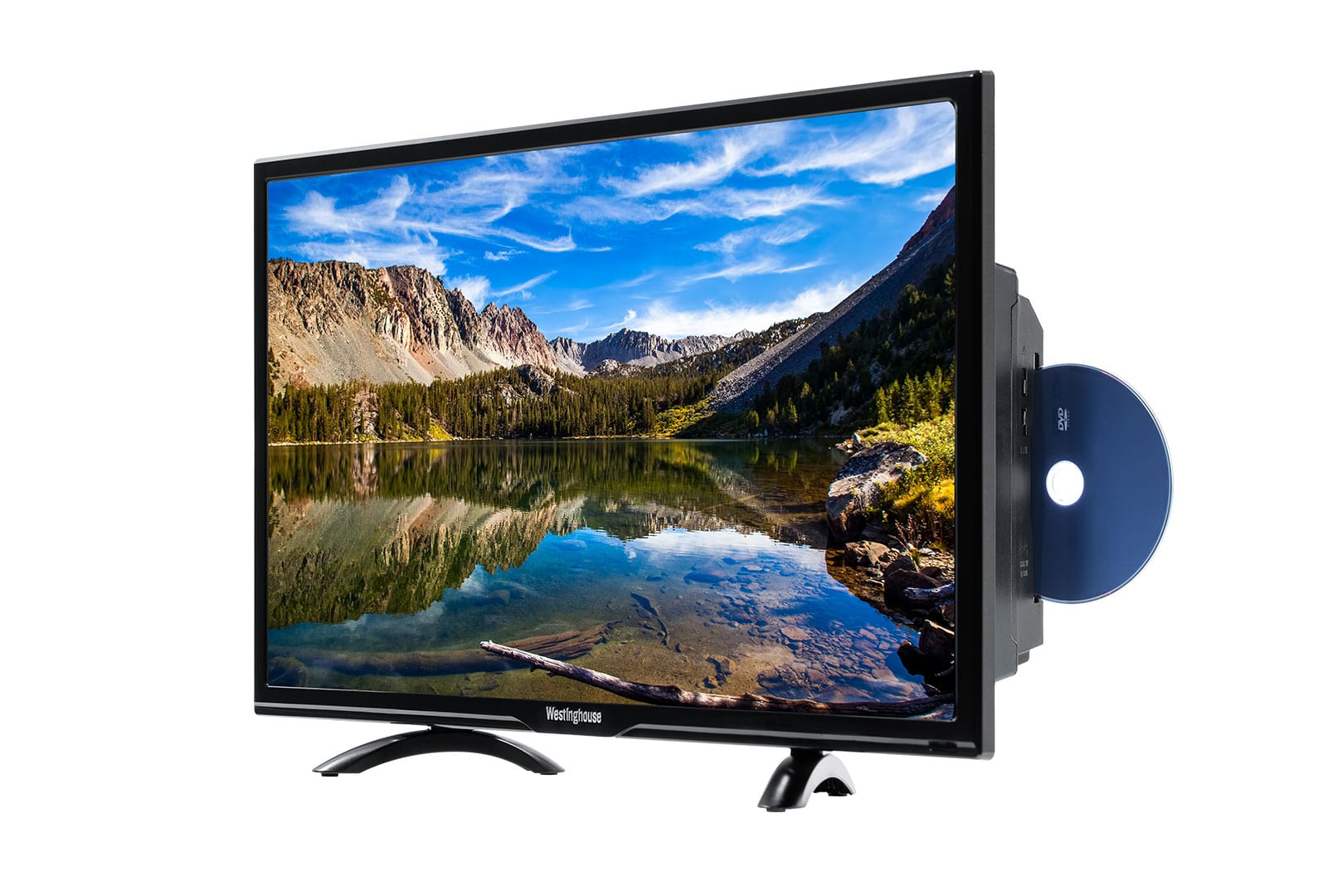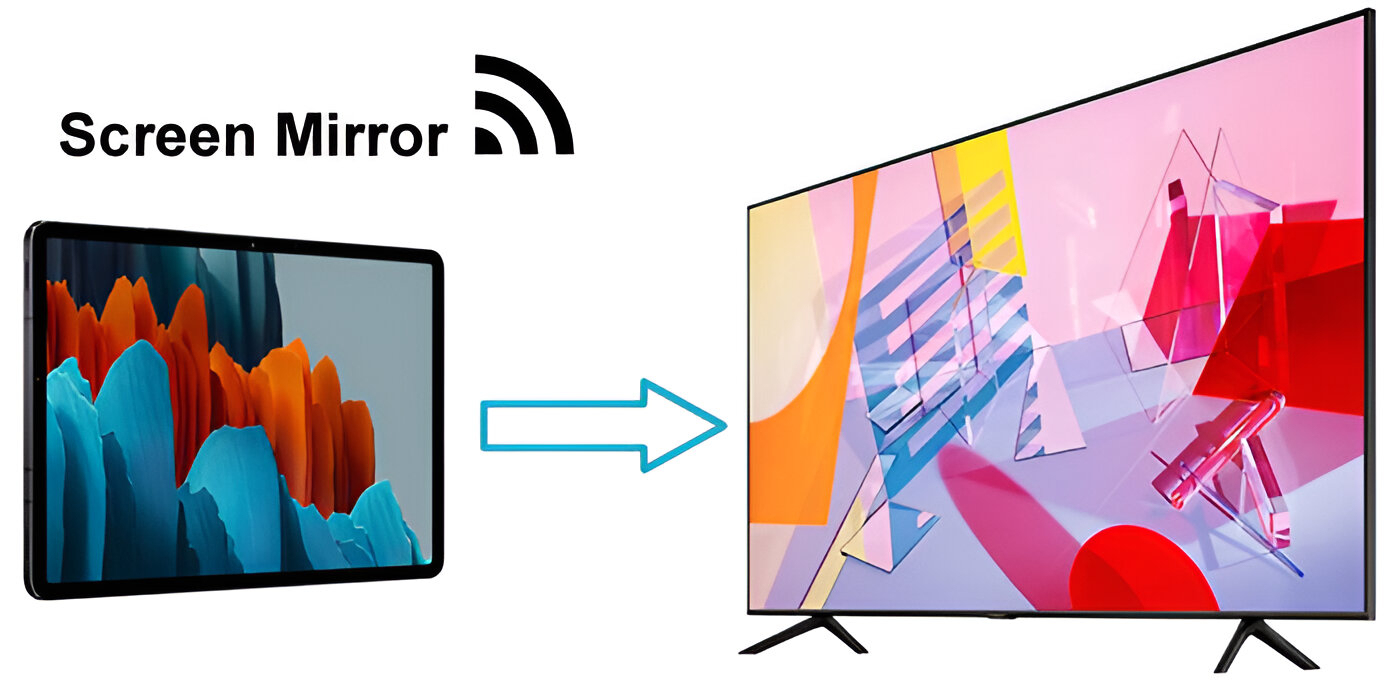Introduction
Welcome to the world of screen mirroring! In this digital age, the way we consume media has evolved, and the need for seamless connectivity between devices has become a necessity. Screen mirroring is an incredible feature that allows you to share the content from your Samsung tablet directly onto your TV screen.
But what exactly is screen mirroring? It is the process of replicating the display of your Samsung tablet onto your television, essentially turning your TV into a larger version of your tablet screen. This means you can enjoy your favorite movies, videos, photos, and even apps on the big screen, providing an immersive and engaging viewing experience.
So, why would you want to screen mirror your Samsung tablet to your TV? The reasons are plentiful! Whether you want to enjoy a movie night with your friends and family, showcase a presentation at work, or simply want to browse the web on a larger screen, screen mirroring offers endless possibilities.
Now, before we dive into the different methods of screen mirroring, it’s important to check if your Samsung tablet supports this feature. Most recent Samsung tablets have screen mirroring capabilities, but it’s always a good idea to double-check. You can do this by going to the settings menu on your tablet and looking for the screen mirroring option. If it’s available, you’re good to go!
What is Screen Mirroring?
Screen mirroring is a technology that allows you to mirror or replicate the display from one device onto another. In the context of a Samsung tablet, screen mirroring enables you to project the screen of your tablet onto a larger screen such as a TV.
When you engage in screen mirroring, whatever you see on your Samsung tablet – be it videos, photos, presentations, or apps – will be displayed in real-time on the TV screen. This means that you can enjoy your content on a bigger and more immersive display.
Screen mirroring makes it possible to share your tablet’s content with a larger audience, whether it’s for entertainment or work purposes. You can take advantage of this feature to watch movies or videos, play games, give presentations, or even navigate the internet with ease.
Essentially, screen mirroring eliminates the need to huddle around a small tablet display. Instead, it allows you to transform your TV into an extended monitor, creating a more engaging viewing experience for everyone involved.
What makes screen mirroring even more remarkable is that it is not limited to specific types of content. Whether you want to display a video streaming service, a photo gallery, a social media app, or any other application on your Samsung tablet, screen mirroring lets you do it all.
One important thing to note is that screen mirroring does not involve transferring or sending files from one device to another. It is purely a mirroring function that replicates what is on your tablet’s screen onto the TV screen in real-time.
So, next time you want to take your favorite shows, presentations, or games to the next level, remember screen mirroring is the key to unlocking a bigger and more captivating display experience.
Why Would You Want to Screen Mirror Your Samsung Tablet to TV?
Screen mirroring your Samsung Tablet to your TV offers a multitude of benefits and opens up a world of possibilities. Here are some compelling reasons why you might want to use this feature:
1. Larger Display: One of the primary reasons to screen mirror your Samsung tablet to your TV is to enjoy a larger display. Whether you’re watching movies, videos, or playing games, having a bigger screen enhances the overall visual experience and makes it more immersive.
2. Sharing with Others: Screen mirroring allows you to share your tablet’s content with a larger audience. If you have friends or family over, you can easily stream movies, photos, or even show presentations on the big screen, making it a more enjoyable and inclusive experience for everyone.
3. Better Viewing Experience: Some apps are better enjoyed on a large screen. With screen mirroring, you can transform your TV into a second monitor for your tablet, providing a more comfortable and dynamic viewing experience. Whether you’re browsing the internet, using social media apps, or even reading e-books, the larger display can make it easier on the eyes.
4. Gaming on the Big Screen: Gaming enthusiasts will appreciate the ability to play games from their Samsung tablet on the TV. With screen mirroring, you can turn your TV into a gaming console, allowing for a more immersive and interactive gaming experience. Take your favorite mobile games to the next level by playing them on the big screen with a wireless controller.
5. Work Presentations: Screen mirroring is also incredibly useful for professionals who need to give presentations. Whether it’s for a business meeting or a classroom setting, you can mirror your Samsung tablet’s screen and showcase your slides or documents on a larger display, making it easier for everyone to follow along.
6. Easy Content Sharing: Screen mirroring eliminates the need for cables or physical transfers of files. You can easily share your tablet’s content with others or access media from your tablet on a bigger screen without the hassle of connecting wires or transferring files.
7. Enhanced Audio Experience: When you screen mirror your Samsung tablet to your TV, you can take advantage of the TV’s built-in speakers or connect it to a sound system. This results in a more powerful and immersive audio experience, especially when watching movies or enjoying music.
Overall, screen mirroring your Samsung tablet to your TV opens up a world of entertainment, sharing, and convenience. It allows you to enjoy your favorite content on a larger display, share it with others, and enhance your overall visual and audio experience.
How to Check if Your Samsung Tablet Supports Screen Mirroring
Before you can start screen mirroring your Samsung tablet to your TV, it’s important to check if your tablet supports this feature. Most recent Samsung tablets have screen mirroring capabilities, but it’s always a good idea to double-check. Here’s how you can do it:
1. Go to Settings: Start by opening the settings menu on your Samsung tablet. You can usually find the settings icon in the app drawer or the notification shade. Tap on it to access the settings.
2. Look for the Screen Mirroring Option: Once you’re in the settings menu, search for the screen mirroring option. It may be labeled as “Screen Mirroring,” “Smart View,” or “Wireless Display,” depending on the specific model of your Samsung tablet.
3. Tap on the Screen Mirroring Option: Once you’ve located the screen mirroring option, tap on it to access the screen mirroring settings.
4. Check for Compatibility: In the screen mirroring settings, your Samsung tablet will scan for compatible devices nearby. If your tablet supports screen mirroring, it should display a list of available devices that you can connect to. This list may include your TV or other compatible devices.
5. Test a Connection: To ensure that your tablet supports screen mirroring, select your TV or another device from the list and establish a connection. If the connection is successful and your tablet’s screen is mirrored onto the TV, it means that your tablet supports screen mirroring.
If you cannot find the screen mirroring option in your Samsung tablet’s settings or if the connection fails, it could indicate that your tablet does not support screen mirroring. In this case, you may need to consider alternative methods to connect your tablet to the TV, such as using an HDMI cable or a wireless adapter.
It’s worth noting that the availability and location of the screen mirroring settings may vary slightly depending on the specific model and version of Samsung tablet you own. If you’re having trouble finding the screen mirroring option, you can refer to the user manual or visit the Samsung support website for more detailed instructions specific to your tablet model.
Now that you’ve determined whether your Samsung tablet supports screen mirroring, you’re ready to explore various methods of connecting your tablet to the TV and enjoying your favorite content on the big screen!
How to Screen Mirror Samsung Tablet to TV Using an HDMI Cable
If your Samsung tablet and TV both have HDMI ports, you can easily screen mirror your tablet to the TV using an HDMI cable. Here’s how you can do it:
1. Check Ports: First, ensure that both your Samsung tablet and TV have HDMI ports. Look for the HDMI port on the side or back of your tablet and on your TV. Note down the HDMI port number on the TV, as you will need it later.
2. Get an HDMI Cable: Purchase an HDMI cable that matches the port type on your Samsung tablet, usually micro HDMI or USB-C. Make sure the cable is long enough to reach from your tablet to the TV.
3. Connect HDMI Cable: Connect one end of the HDMI cable to the HDMI port on your Samsung tablet and the other end to an available HDMI port on your TV. Remember to take note of the specific HDMI port number you connected it to on the TV.
4. Switch Input Source: On your TV remote, press the “Input” or “Source” button. Use the arrow keys or navigate the menu to select the HDMI input associated with the port you connected the cable to. This varies depending on your TV model. Once selected, your TV will display the content from your Samsung tablet.
5. Adjust Tablet Settings (if needed): On your Samsung tablet, go to the settings and select the display or screen mirroring option. Depending on the tablet model and Android version, you may find the screen mirroring option under “Connect and Share,” “Display,” or “Settings.” Enable the screen mirroring option, and your tablet’s screen will be mirrored on the TV.
6. Enjoy Content on the TV: With the HDMI cable connection established and screen mirroring enabled, you can now enjoy all the content from your Samsung tablet directly on the TV screen. Play videos, browse the web, view photos, or run apps, and the content will be mirrored in real-time on the TV.
7. Adjust Display Settings (if needed): Depending on your preferences and the TV’s display settings, you may want to adjust the screen resolution, aspect ratio, or other display settings. This can usually be done through the TV’s settings menu, allowing you to optimize the display of your tablet’s content on the TV screen.
Screen mirroring via HDMI cable provides a reliable and high-quality connection between your Samsung tablet and TV. It is a straightforward method that offers a seamless viewing experience without lag or wireless interference.
Note that the availability and location of the screen mirroring settings on your Samsung tablet may vary depending on the model and Android version. If you encounter any issues or need more detailed instructions, refer to your tablet’s user manual or visit the Samsung support website for assistance.
Now you can sit back, relax, and enjoy your favorite content from your Samsung tablet on the big screen using an HDMI cable.
How to Screen Mirror Samsung Tablet to TV Using a Wireless Adapter
If you prefer a wireless solution to screen mirror your Samsung tablet to the TV, you can utilize a wireless adapter. This handy device allows you to connect your tablet wirelessly to the TV. Here’s how you can do it:
1. Check TV Compatibility: Ensure that your TV supports screen mirroring or has an available HDMI port. Some TVs may have built-in wireless screen mirroring capabilities, while others may require the use of a wireless adapter.
2. Choose a Wireless Adapter: Purchase a wireless adapter that supports screen mirroring, such as a Miracast or Chromecast device. These adapters connect to the HDMI port on your TV and provide wireless screen mirroring functionality.
3. Connect Wireless Adapter to TV: Plug the wireless adapter into an available HDMI port on your TV. Some adapters may require an additional USB power source, so make sure to connect it to a USB port on the TV or use an external power adapter if necessary.
4. Set up the Wireless Adapter: Follow the manufacturer’s instructions to set up the wireless adapter. This usually involves connecting the adapter to your home Wi-Fi network and configuring any necessary settings through a mobile app or the TV’s settings menu.
5. Enable Screen Mirroring on Samsung Tablet: On your Samsung tablet, access the settings menu and locate the screen mirroring or casting option. The exact location of this option may vary depending on your tablet’s model and Android version. Enable screen mirroring and wait for the tablet to detect available wireless display devices.
6. Connect to TV: Select your TV or the corresponding wireless adapter from the list of available devices on your Samsung tablet. Once connected, the screen of your tablet will be mirrored on the TV screen wirelessly.
7. Adjust Settings (if needed): Depending on your preferences and the capabilities of the wireless adapter, you may have the option to adjust display settings, resolution, or other display-related configurations. These settings can usually be accessed through the wireless adapter’s app or the TV’s settings menu.
With the wireless adapter set up and connected, you can now enjoy the content from your Samsung tablet on the larger TV screen without the need for any cables.
It’s worth noting that different wireless adapters may have varying features and compatibility requirements. Make sure to consult the user manual or follow the manufacturer’s instructions for specific guidance on configuring and optimizing the screen mirroring experience.
By using a wireless adapter, you can easily screen mirror your Samsung tablet to the TV, providing a convenient and hassle-free solution for enjoying your favorite content on the big screen.
How to Screen Mirror Samsung Tablet to TV Using a Streaming Device
If you have a streaming device, such as a Roku, Apple TV, or Amazon Fire TV, you can utilize it to screen mirror your Samsung tablet to the TV. This allows you to enjoy your tablet’s content on a larger screen with ease. Here’s how you can do it:
1. Check TV and Streaming Device Compatibility: Ensure that your TV has an available HDMI port and is compatible with the streaming device you have or plan to purchase. Most modern TVs support streaming devices via HDMI.
2. Set up the Streaming Device: Follow the manufacturer’s instructions to set up the streaming device. This usually involves connecting the device to the HDMI port on your TV and connecting it to your home Wi-Fi network.
3. Enable Screen Mirroring on Your Samsung Tablet: Access the settings menu on your Samsung tablet and locate the screen mirroring or casting option. This setting may vary depending on your tablet’s model and Android version. Enable screen mirroring and wait for the tablet to detect available devices.
4. Connect Samsung Tablet to Streaming Device: On your Samsung tablet, select the streaming device from the list of available devices. Once connected, the screen of your tablet will be mirrored onto the TV screen via the streaming device.
5. Adjust Settings (if needed): Depending on your preferences and the capabilities of the streaming device, you may have the option to adjust display settings, resolution, or other configurations. These settings can typically be accessed through the streaming device’s app or the TV’s settings menu.
With the streaming device set up and connected, you can now enjoy the content from your Samsung tablet on the larger TV screen with the convenience of wireless screen mirroring.
It’s important to note that the features and functionalities of streaming devices may vary. Some devices may offer additional features like voice control or advanced streaming options. Make sure to consult the user manual or follow the manufacturer’s instructions for specific guidance on configuring and optimizing the screen mirroring experience.
The use of a streaming device provides a versatile and accessible method for screen mirroring your Samsung tablet to the TV. It eliminates the need for cables and enables you to enjoy a wide range of content on the big screen with ease.
Troubleshooting Common Issues with Screen Mirroring
While screen mirroring your Samsung tablet to the TV is typically a straightforward process, you may occasionally encounter some issues. Here are some common problems that you might face and potential troubleshooting solutions:
1. Connection Dropouts: If you experience frequent connection dropouts or intermittent screen freezing during screen mirroring, try moving your Samsung tablet and the TV closer to the Wi-Fi router to improve signal strength. Additionally, check for any wireless interference or obstructions such as thick walls or other electronic devices that may disrupt the Wi-Fi signal.
2. Lag or Delay: If you notice a delay between the actions on your Samsung tablet and the corresponding display on the TV, ensure that both devices are connected to a stable Wi-Fi network. Additionally, reducing the distance between the tablet and the TV, closing unnecessary apps or background processes, and keeping your tablet’s software up to date can help minimize lag during screen mirroring.
3. Audio Out of Sync: If you encounter issues with the audio being out of sync with the video, check the audio settings on your TV and adjust any audio delay or lip-sync options if available. Additionally, try disconnecting and reconnecting the screen mirroring connection to see if it resolves the audio syncing issue.
4. Resolution and Picture Quality: If you are experiencing lower resolution or poor picture quality during screen mirroring, ensure that your TV and tablet are both set to their recommended display resolutions. Some TVs may have specific picture settings for screen mirroring, so adjust these settings to optimize the visual quality on the TV screen.
5. Incompatible Apps: Certain apps may not support screen mirroring or may have limitations when displayed on a TV. If you encounter issues with specific apps not working properly or displaying correctly during screen mirroring, try using alternative apps or accessing the content through a web browser instead.
6. Device Compatibility: If you are unable to establish a screen mirroring connection between your Samsung tablet and TV, ensure that both devices support screen mirroring and are on the same Wi-Fi network. Some older Samsung tablets or TVs may not offer screen mirroring capabilities, in which case, alternative methods such as using an HDMI cable or a wireless adapter may be necessary.
7. Update Software: Keeping both your Samsung tablet and TV updated with the latest software versions can help resolve potential compatibility issues and improve overall performance during screen mirroring. Check for software updates regularly for both devices and install any available updates.
If you encounter persistent issues with screen mirroring despite troubleshooting attempts, consult the user manual for your Samsung tablet and TV, or reach out to the manufacturer’s support for further assistance.
By troubleshooting common issues with screen mirroring, you can ensure a smooth and enjoyable experience of mirroring your Samsung tablet’s screen onto the TV, allowing you to fully enjoy your content on the big screen.
Conclusion
Screen mirroring your Samsung tablet to your TV opens up a world of possibilities, allowing you to enjoy your favorite content on a larger and more immersive display. Whether you choose to connect using an HDMI cable, a wireless adapter, or a streaming device, screen mirroring offers a convenient and versatile way to share your tablet’s screen with friends, family, or colleagues.
In this guide, we discussed what screen mirroring is and explored the reasons why you may want to use this feature. We also provided step-by-step instructions on how to check if your Samsung tablet supports screen mirroring and demonstrated how to screen mirror using different methods, including an HDMI cable, a wireless adapter, and a streaming device.
Furthermore, we explored troubleshooting common issues that you may encounter during the screen mirroring process and provided potential solutions to overcome these obstacles. By addressing these issues, you can ensure a seamless and enjoyable screen mirroring experience.
Remember to consult your Samsung tablet’s user manual or the manufacturer’s website for specific instructions tailored to your tablet model and Android version. The availability and location of screen mirroring settings may vary, so it’s always helpful to refer to the relevant documentation for accurate guidance.
Now, armed with the knowledge and techniques provided in this guide, you can confidently screen mirror your Samsung tablet to your TV and take your entertainment, presentations, and overall digital experience to new and exciting heights.







